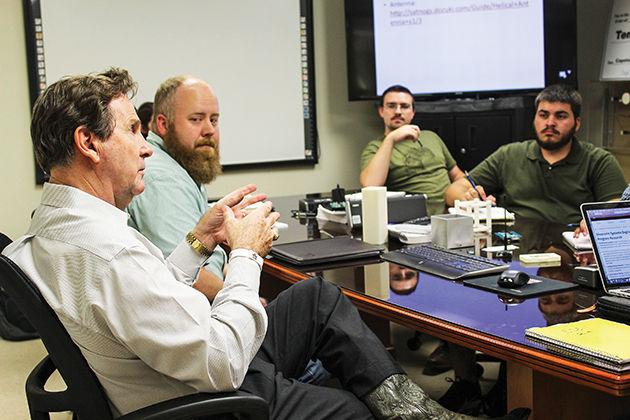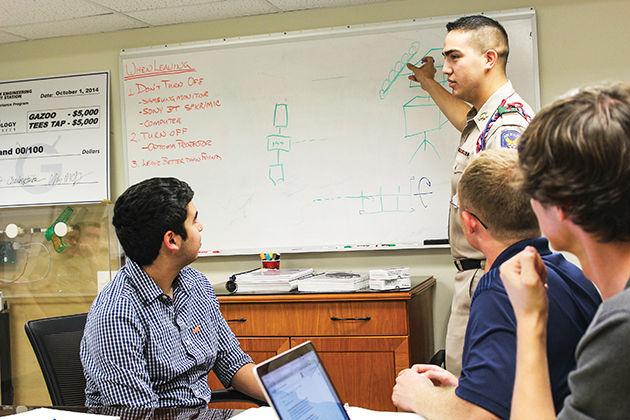Satellites collect large amounts of data about space, from temperature and radiation data to images of the planets. Due to their distance from Earth, the data is often difficult to access, but a “ground station” being built at Texas A&M by students will expand this information highway.
The project, called SatNOGS, aims to improve the availability of the data for anyone who wants to see information, and is being partly funded by NASA.
The project was brought to A&M through a former student named Jeremy Brandt, an employee of the engineering firm Lockhard and White.
Jordon Roiko is an electronic systems engineering sophomore at A&M and the manager of the project. He said the new ground station will make it substantially easier for any researchers, or curious individuals, to see the data a certain satellite is recording.
“What we are essentially doing is allowing an interface between a user and a satellite that could be anywhere in the world,” Roiko said. “The purpose of the SatNOGS project is to allow users a larger ecosystem for monitoring their satellites.”
Physically, the ground station is more compact than might be expected for a technology that communicates with satellites.
“It is a tripod with a pole sticking up that is connected to two boxes, one for electrical components and one for motors,” said Jesse Aldape, electronic systems engineering sophomore and mechanics team leader. “Then you have the antenna array that will shift towards the position of the satellite.”
Elisha Gerhard, electronic systems engineering junior and communications team leader, said the significance of the new ground station is that it will allow access to satellites in a region of space that was previously inaccessible.
“Each station has its own area of space that it can cover and only certain satellites will come through that area at any one time,” Gerhard said. “Building this station and connecting it to a network of already-created stations will eliminate the blind spots around the Earth where data cannot be received from the satellites.”
The A&M ground station will be the first one of its kind in this area. It will also be especially useful considering the distance to the next nearest station.
“I’ve only seen one or two in the state. I don’t know if they are always on either,” Brandt said. “There aren’t many of them in the world let alone in the states.”
This means that there will be a significant area that satellites can pass through where the A&M station will be the only station within reach.
In addition to partially funding the project, NASA will be able to use the ground station to communicate with satellites in this area if they desire to.
The station is set to be built and operational by mid-December.
NASA teams up with A&M to bring new tech to CStat
November 16, 2015
0
Donate to The Battalion
Your donation will support the student journalists of Texas A&M University - College Station. Your contribution will allow us to purchase equipment and cover our annual website hosting costs.
More to Discover









